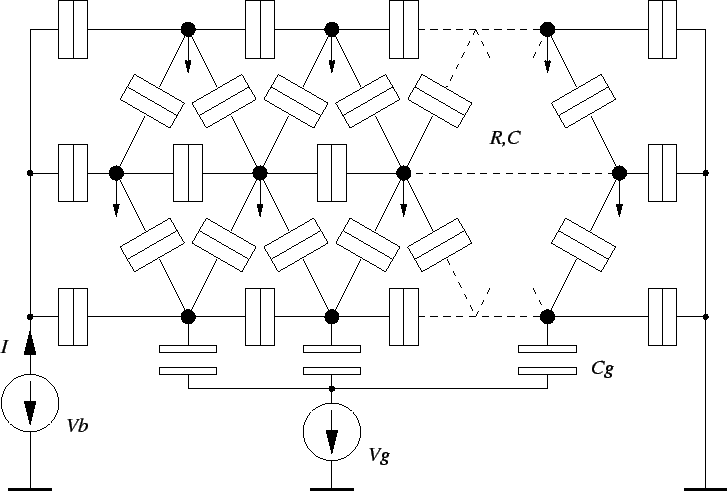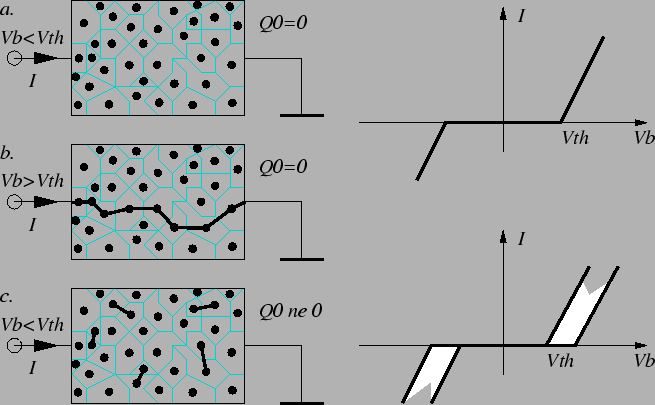



Next: 5.2.11 Discussion of Simulation
Up: 5.2 Single Electron Memories
Previous: 5.2.9 Qo Independent Memory
5.2.10 Multi Island Memory
The most recent and very promising design and experimental realization of a
memory cell was done by K. Yano et al. [109]. This design fulfills
three major design rules: it works at room temperature, is random background
charge independent, and is manufacturable with todays process technology. The
idea is somehow similar to the previous one, in that a flash memory like
device is considered. With a gate electrode charges are trapped, which
modulate the current through the structure. The
independence of random
background charge is achieved in a different way, namely the use of many
interconnected similar islands formed by a granular film, for instance,
poly-silicon (see Fig. 5.13).
Figure 5.13:
Circuit diagram of a multi-island memory cell. Arrows starting
at islands indicate a connection to the gate capacitor.
 |
A simplified qualitative explanation for Q0-independence is as follows.
Consider a piece of granular film across which we apply a small bias voltage
Vb (see Fig. 5.14).
Figure 5.14:
A granular film exhibits a Coulomb blockade regardless of the background charge
Q0. The threshold voltage Vth changes slightly if the
background charge is changed.
 |
In the case of zero
background charge (Q0 = 0) no current will flow, due to the Coulomb blockade
(see Fig. 5.14a). If one increases the bias voltage
further, then at one point a conducting path will form and current will flow
(Fig. 5.14b).
If random background charge is present,
 ,
single regions will
exhibit no Coulomb blockade, due to the background charge, and others will show an
increased Coulomb blockade (Fig. 5.14c; parts conduct others
do not). But overall no conducting path has formed, thus the Coulomb blockade is still
present. Increasing Vb will finally lead to a conducting path. The
threshold voltage
,
single regions will
exhibit no Coulomb blockade, due to the background charge, and others will show an
increased Coulomb blockade (Fig. 5.14c; parts conduct others
do not). But overall no conducting path has formed, thus the Coulomb blockade is still
present. Increasing Vb will finally lead to a conducting path. The
threshold voltage
 will be different, but not necessarily
smaller.
will be different, but not necessarily
smaller.




Next: 5.2.11 Discussion of Simulation
Up: 5.2 Single Electron Memories
Previous: 5.2.9 Qo Independent Memory
Christoph Wasshuber


